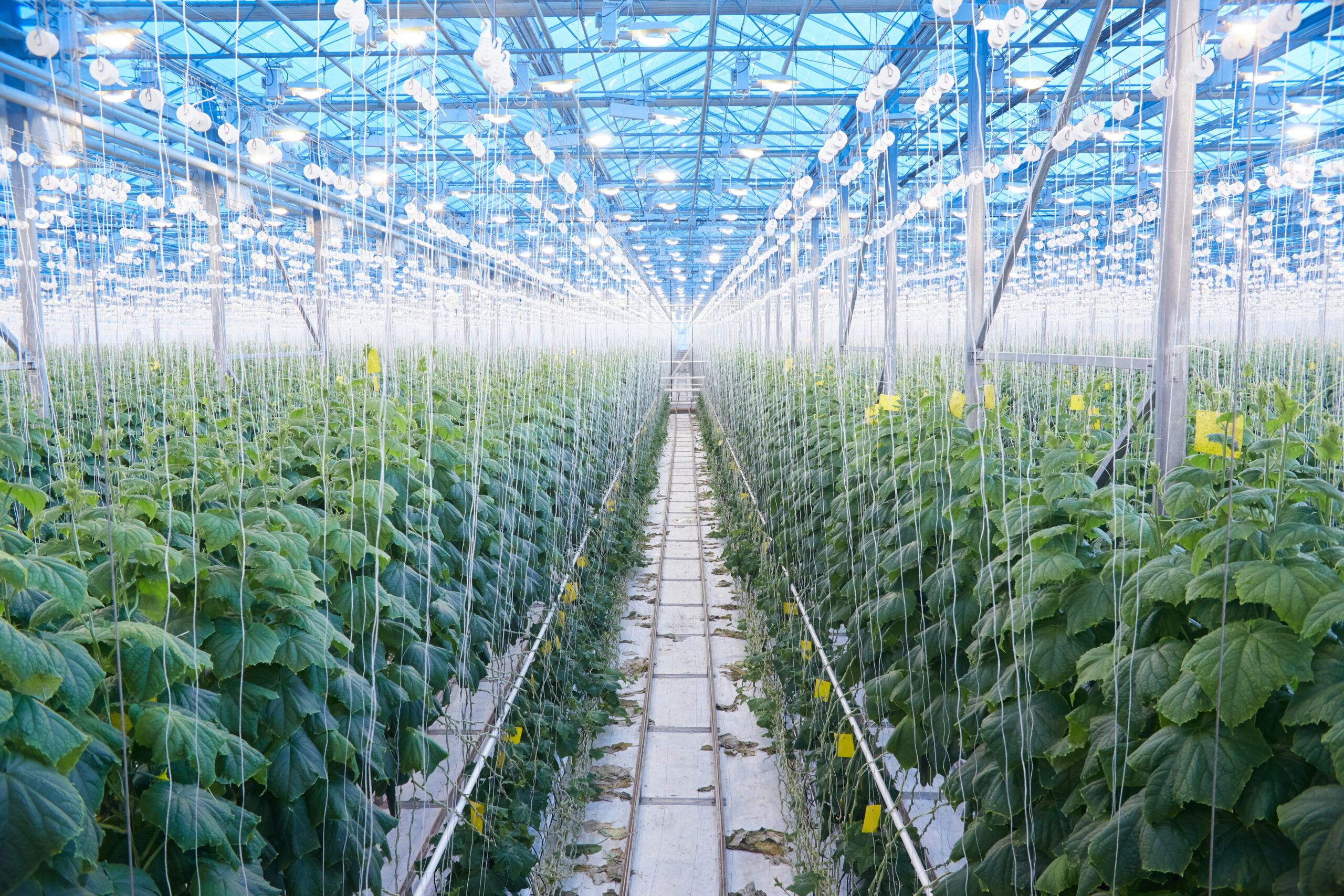Imagine a world where fresh, high-quality produce is grown locally, regardless of the season or weather conditions, where strawberries are harvested in mid-winter, leafy greens thrive during the hottest summer days, and tomatoes ripen perfectly in the heart of a bustling city.
This isn’t a futuristic dream—it’s the reality of Controlled Environment Agriculture (CEA). As the global population continues to rise and climate change introduces new challenges, traditional farming methods are struggling to keep up. The agricultural sector is increasingly turning to innovative solutions like CEA to address these issues, transforming how we grow crops and making the process more sustainable and efficient.
What is Controlled Environment Agriculture?
Controlled Environment Agriculture refers to a technology-based approach to farming that provides optimal growing conditions for crops through the use of various controlled factors such as temperature, humidity, light, and CO2 levels. By regulating these environmental conditions, CEA enables the production of high-quality crops year-round, irrespective of external weather conditions. The primary goal of CEA is to maximize crop yields while minimizing resource use and environmental impact.
The Technology Behind CEA
CEA integrates several advanced technologies, including hydroponics, aeroponics, and aquaponics. These soilless farming methods allow plants to grow in nutrient-rich solutions or air, significantly reducing water usage compared to traditional soil-based agriculture. Additionally, LED lighting systems provide plants with the precise spectrum and intensity of light they need for photosynthesis, leading to faster growth cycles and higher yields.
Environmental control systems are another critical component of CEA. These systems use sensors and automation to monitor and adjust growing conditions in real-time, ensuring that plants receive the ideal environment for growth. This level of precision agriculture reduces the risk of crop failure and enhances productivity.
Benefits of CEA
- Sustainability: CEA significantly reduces the need for pesticides and herbicides, as the controlled environments are less prone to pest and disease infestations. Moreover, the efficient use of water and nutrients in CEA systems helps conserve precious natural resources.
- Year-Round Production: With CEA, farmers can grow crops throughout the year, regardless of seasonal variations. This continuous production cycle helps meet the increasing demand for fresh produce.
- Space Efficiency: Vertical farming, a popular form of CEA, utilizes stacked layers to grow crops, making it possible to cultivate a large number of plants in a relatively small footprint. This space-saving technique is particularly beneficial in urban areas where land is limited.
- Enhanced Crop Quality: By optimizing environmental conditions, CEA ensures that crops are consistently of high quality, with better taste, nutritional value, and longer shelf life.
- Reduced Carbon Footprint: The localized nature of CEA reduces the need for long-distance transportation of produce, thereby cutting down on greenhouse gas emissions associated with food logistics.
UC Davis and The VINE: Leading the Way in CEA Education
The VINE, in collaboration with UC Davis Continuing and Professional Education, is excited to announce the launch of a new Controlled Environment Agriculture (CEA) Program. This program, set to begin on July 1, is tailored for farm operation managers, horticulturists, and a wide range of professionals looking to excel in indoor farming.
The CEA Program is designed to provide a comprehensive education that combines theoretical knowledge with practical skills. The curriculum is taught by leading experts in the field and covers a wide range of topics essential for success in CEA.
Program Highlights
- Introduction to CEA: The introductory course covers the basics of indoor farming, exploring various business models, and understanding the latest advancements in the field. This foundational course sets the stage for more specialized learning in subsequent courses.
- Plant Production in Indoor Farming: This course provides insights into effective farm management, plant physiology, and nutrient systems. Participants will learn how to optimize plant growth and maximize yields in controlled environments.
- Post-Harvest Processes: Ensuring Crop Quality and Safety in CEA: Ensuring product safety, optimizing storage, and effective marketing techniques are critical components of the post-harvest process. This course teaches best practices for handling and storing produce to maintain quality and extend shelf life.
- Data-Driven Growing: The final course focuses on techniques for using data to streamline and improve farming operations. Participants will learn how to harness the power of data analytics to enhance decision-making and operational efficiency.
Benefits of the Program
The CEA Program is entirely online, making it accessible to professionals both in the U.S. and internationally. The flexible online platform allows participants to learn at their own pace, balancing their studies with professional and personal commitments. Individual course fees are $1,000-$2,000 and the full program is priced at $6,000, offering a valuable investment in future-proofing agricultural careers.
Enhance Your CEA Skills
As the agricultural sector evolves, staying ahead of the curve is essential. The CEA Program at UC Davis offers a unique opportunity to gain the skills and knowledge needed to thrive in the future of farming. For more information and to sign up for the introductory course, please visit the Controlled Environment Agriculture | UC Davis Continuing and Professional Education

